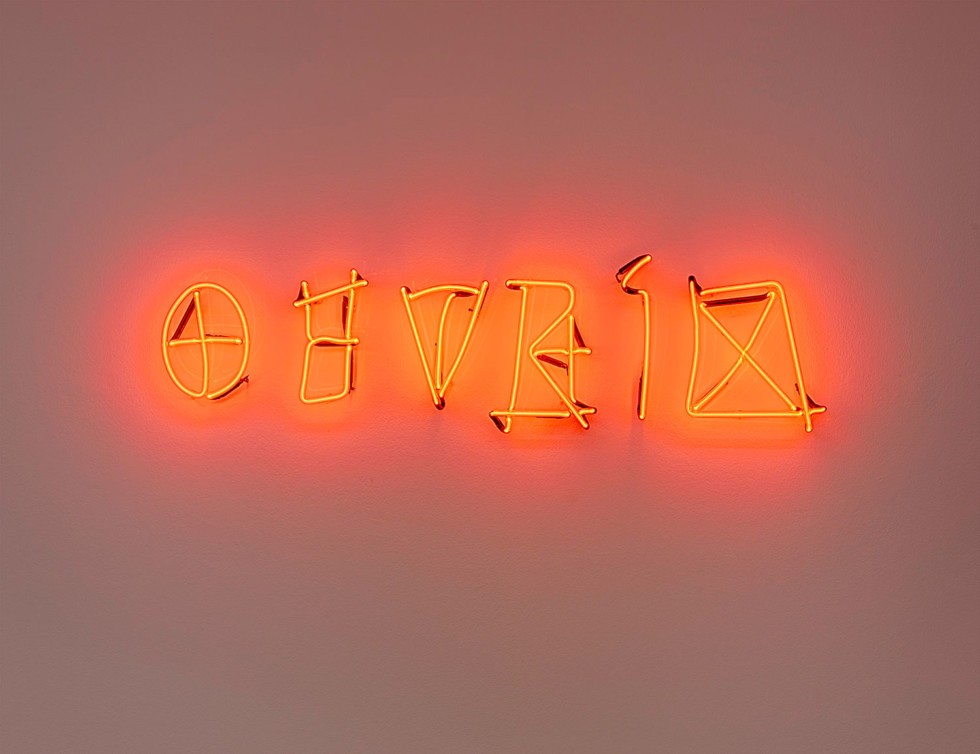Manipulate the World
21 Oct 2017 - 21 Jan 2018

A Few Hours after the Revolution, 2011 Neon sign made after graffiti in Istanbul
The word "devrim" – revolution – written by the opposition and then manipulated to illegibility of the regime faithful
© Aslı Çavuşoğlu
21 October 2017 – 21 January 2018
Curator: Fredrik Liew with Goldin+Senneby
Can a work of art make you question the way you see the world? Can it change your concept of reality? Welcome to a contemporary group exhibition examining what Öyvind Fahlström’s ideas of manipulation and the theatrical might mean today. The exhibition takes over both floors of the museum, with 25 artists responding to these questions with works that react and infringe on the world.
Is the world a playing field?
When Öyvind Fahlström developed a series of paintings with movable parts in the 1960s, the intention was not just to mobilise the painting’s narrative, the variable works also expressed an attitude towards society and politics. Fahlström was part of a Zeitgeist that wanted to redress static and authoritarian narratives and make the world a place that can be manipulated by everyone. This exhibition questions the current state of art’s manipulative possibilities – in a time of alternative facts, relative truths and fragmented narratives. Four historical works by Fahlström create the playing field for the exhibition.
The theatrical in motion on floor 4
Fahlström’s large installation, Dr Schweitzer’s Last Mission (1964–66) is on display on floor 4. The work gathers information and images into fragments that are brought together as a whole in a scenographic tableau. Although strictly speaking, the work is not a game, the form is reminiscent of playing pieces distributed over a surface and where facts, fiction and irrationality are mixed into a narrative with an open ending. Similarly, this part of the exhibition sets the theatrical in motion and questions how speculative settings can manipulate the world.
World Bank becomes a centre for a hidden zone on floor 2
In the windowless exhibition halls on the lower floor, a staged depot of gold ingots (Öyvind Fahlström’s World Bank, 1971) creates a centre for a narrative on the global distribution of money and power. Through Fahlström’s installation, this part of the exhibition establishes itself as a hidden zone, with tales and statements of what lies beneath and is hidden or protected from public view.
Artists in the exhibition
Lawrence Abu Hamdan, Rosella Biscotti, Aslı Çavuşoğlu, Juan Castillo, Kajsa Dahlberg, Detanico Lain, Roza el Hassan, Öyvind Fahlström, Goldin+Senneby, Núria Güell, Candice Lin, Jill Magid, Ibrahim Mahama, Nicolas Mangan, Sirous Namazi, Rivane Neuenschwander, Otobong Nkanga, Pratchaya Phinthong, Katarina Pirak Sikku, Natascha Sadr Haghighian, Jonas Staal, Hito Steyerl, Suha Traboulsi in collaboration with Walid Raad, Thu Van Tran, Alexander Vaindorf.
